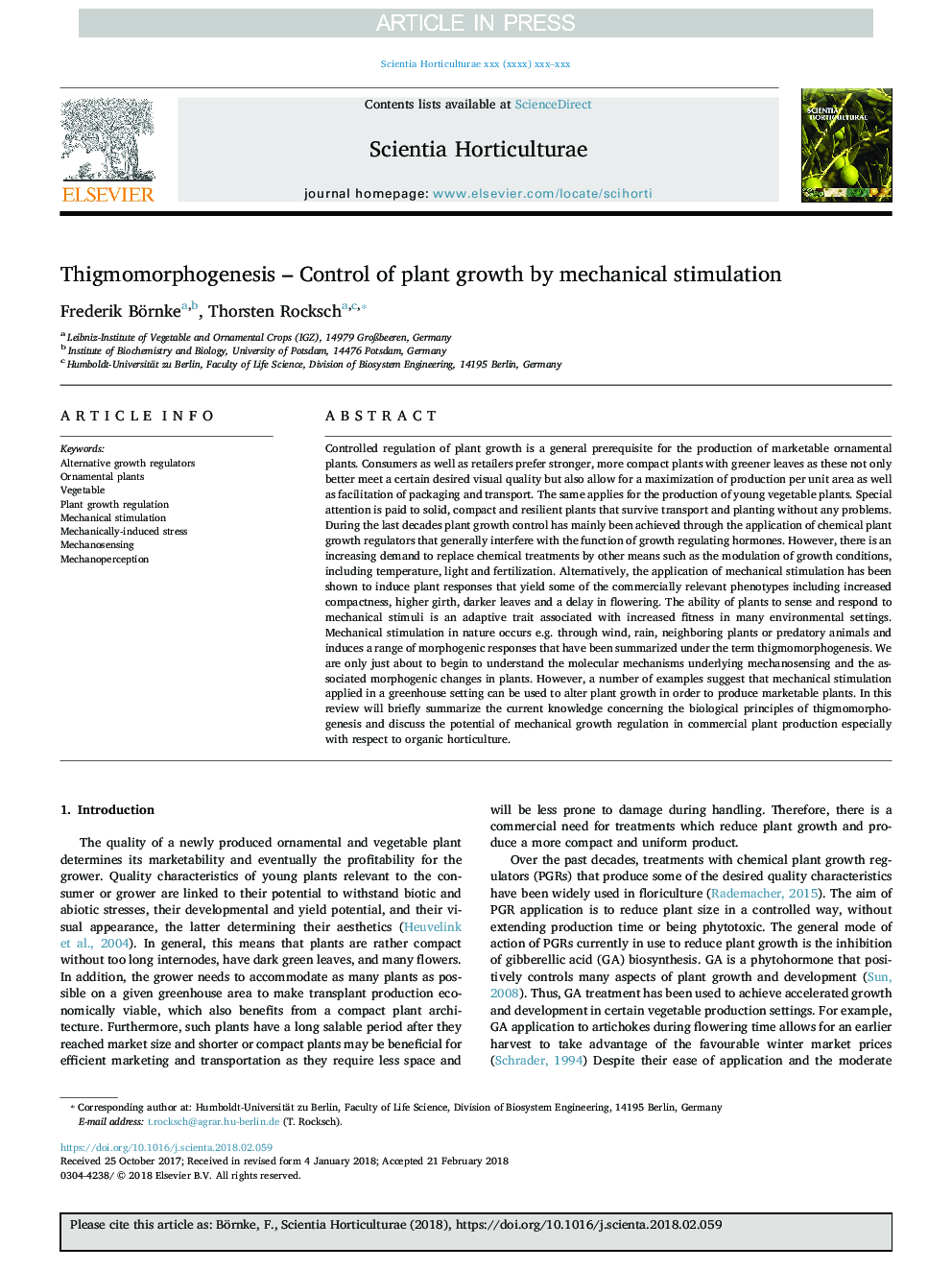| Article ID | Journal | Published Year | Pages | File Type |
|---|---|---|---|---|
| 8892791 | Scientia Horticulturae | 2018 | 10 Pages |
Abstract
Controlled regulation of plant growth is a general prerequisite for the production of marketable ornamental plants. Consumers as well as retailers prefer stronger, more compact plants with greener leaves as these not only better meet a certain desired visual quality but also allow for a maximization of production per unit area as well as facilitation of packaging and transport. The same applies for the production of young vegetable plants. Special attention is paid to solid, compact and resilient plants that survive transport and planting without any problems. During the last decades plant growth control has mainly been achieved through the application of chemical plant growth regulators that generally interfere with the function of growth regulating hormones. However, there is an increasing demand to replace chemical treatments by other means such as the modulation of growth conditions, including temperature, light and fertilization. Alternatively, the application of mechanical stimulation has been shown to induce plant responses that yield some of the commercially relevant phenotypes including increased compactness, higher girth, darker leaves and a delay in flowering. The ability of plants to sense and respond to mechanical stimuli is an adaptive trait associated with increased fitness in many environmental settings. Mechanical stimulation in nature occurs e.g. through wind, rain, neighboring plants or predatory animals and induces a range of morphogenic responses that have been summarized under the term thigmomorphogenesis. We are only just about to begin to understand the molecular mechanisms underlying mechanosensing and the associated morphogenic changes in plants. However, a number of examples suggest that mechanical stimulation applied in a greenhouse setting can be used to alter plant growth in order to produce marketable plants. In this review will briefly summarize the current knowledge concerning the biological principles of thigmomorphogenesis and discuss the potential of mechanical growth regulation in commercial plant production especially with respect to organic horticulture.
Related Topics
Life Sciences
Agricultural and Biological Sciences
Horticulture
Authors
Frederik Börnke, Thorsten Rocksch,
